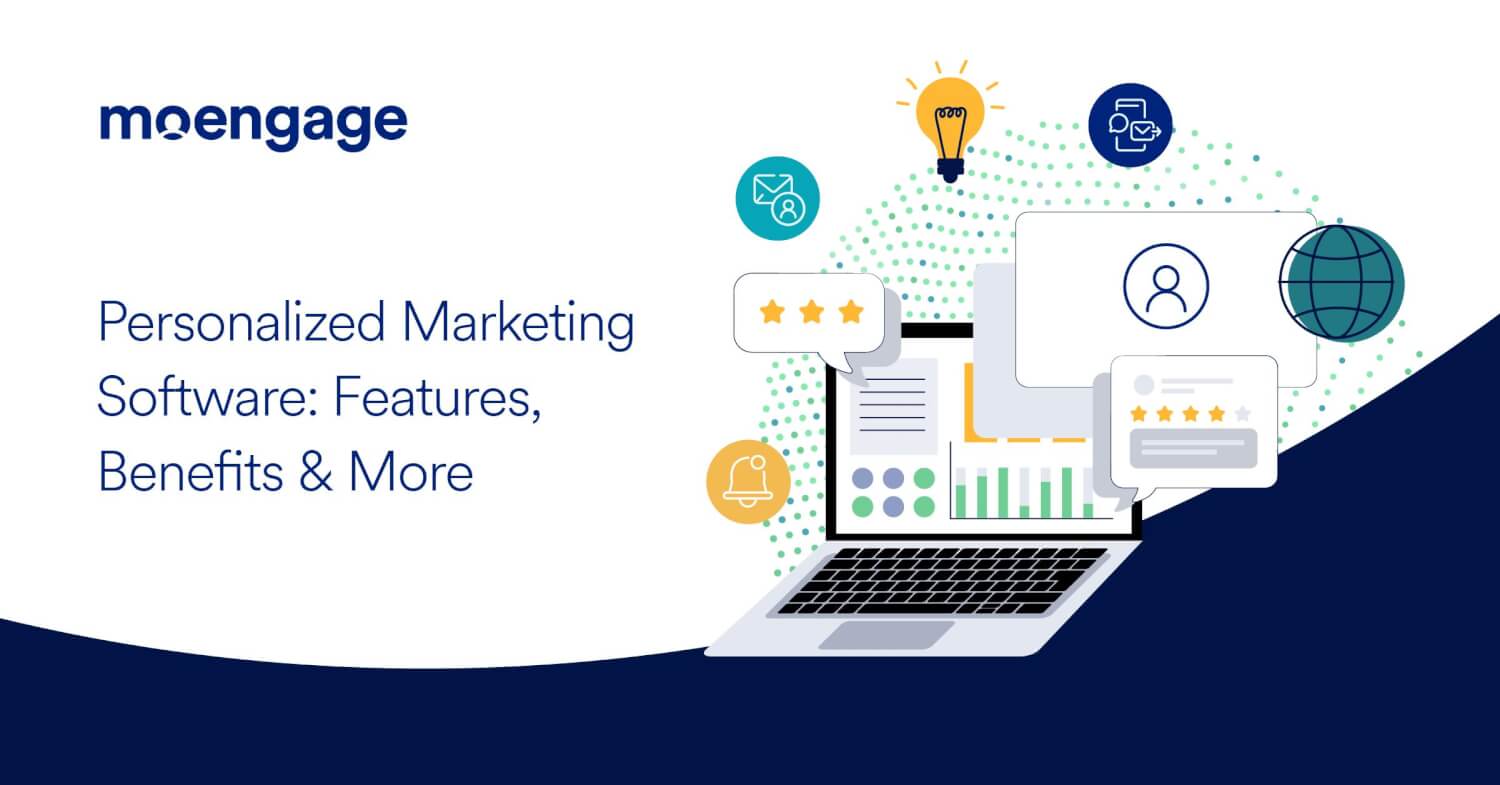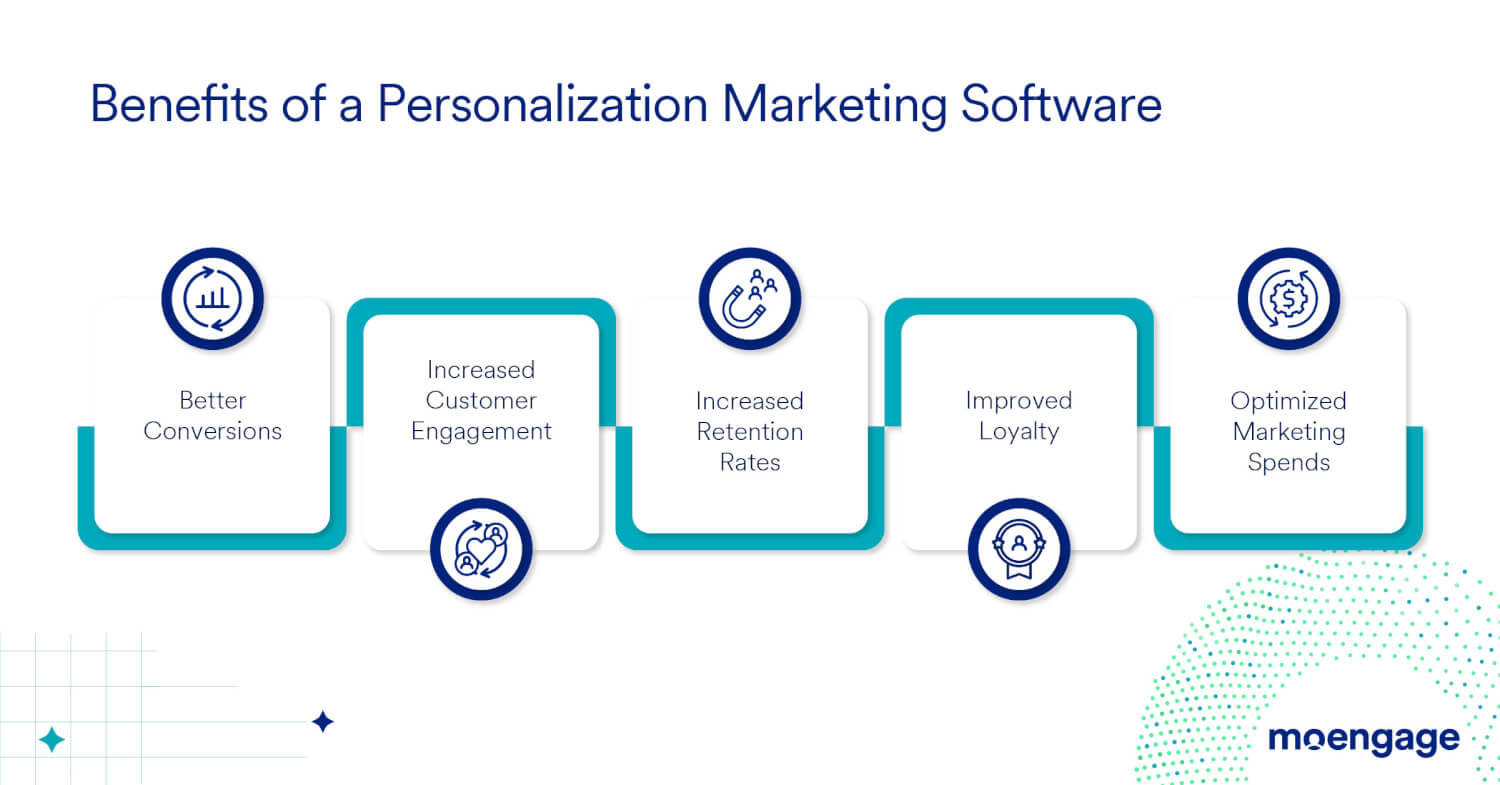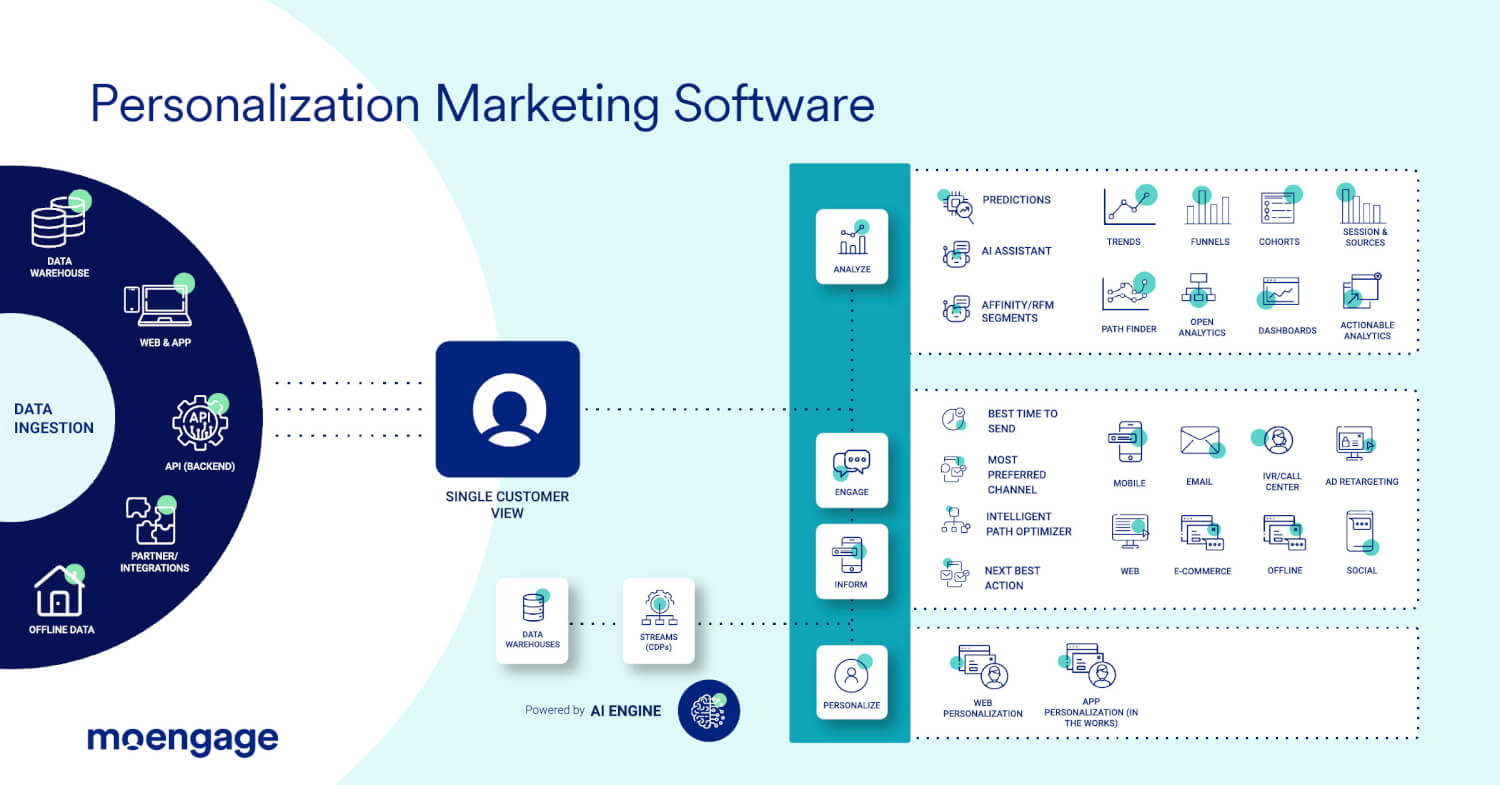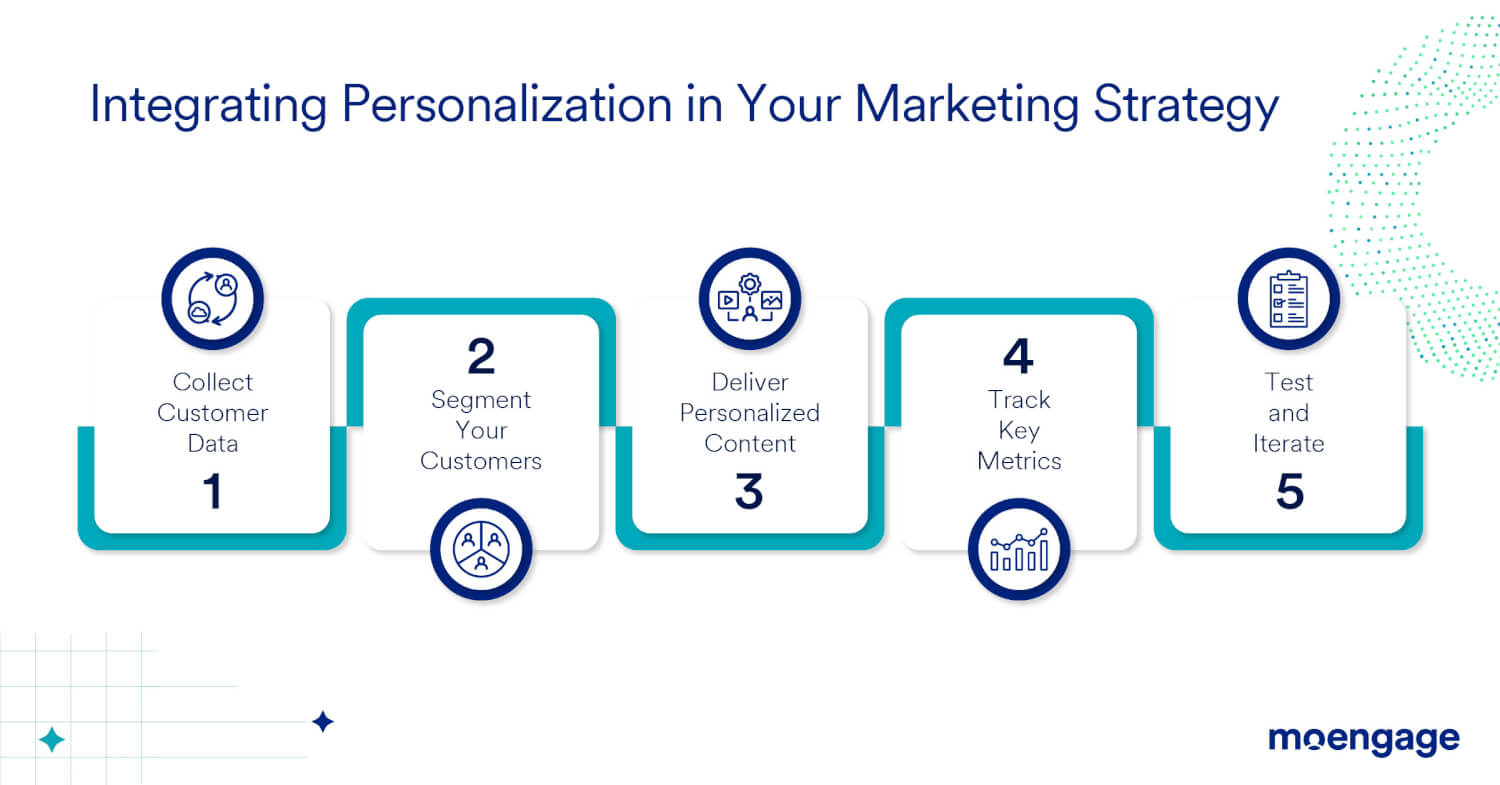Personalized Marketing Software: Features, Benefits, and More

Reading Time: 10 minutes
The fierce competition among brands in various industries highlights a clear reality – customers are constantly presented with a multitude of choices.
This is why the importance of creating memorable experiences to engage customers cannot be understated. To thrive in today’s market, brands must prioritize creating value and establishing meaningful connections with customers that go beyond mere product or service offerings.
Personalization is a critical aspect of creating experiences that are relevant to customers. A lot of this is dependent on understanding your customers on a granular level and using customer, journey, and campaign insights to tailor your interactions with them.
This is where personalization marketing software can help you.
In this article, we’ll talk at length about why such a tool can be an integral part of your tech stack, what features to look for, and more.
But, before we get to that, let’s cover some basics.
What is Personalized Marketing?
Personalized marketing is the approach in which marketing campaigns and strategies are customized according to the behavior, interests, preferences, and demographics of individual customers.
Personalized marketing aims to establish as close of a connection as possible with a customer instead of a one-size-fits-all approach. It focuses on creating relevant and memorable experiences for the customer which in turn improves conversions, engagement, and retention.
5 Benefits of Using Personalized Marketing Tools
Personalized marketing tools allow you to resonate with customers by enabling you to create tailored campaigns and messaging. This has several significant benefits.

1. Improved conversions
Personalized marketing tools can help you segment your customers based on demographics, interests, purchase behavior, and preferences. This can include aspects like browsing behavior, campaign engagement, purchase history, and product preferences. This kind of granular data allows you to identify customers who are most likely to take a desired action so you can send them communication that results in a conversion.
For instance, you can view and analyze how a customer moves through the checkout process, and if you find that a certain customer has abandoned their carts, you can send them tailored messages reminding them of the items left behind. You can also offer discounts or other incentives to nudge them to complete their purchase.
| According to Customer Engagement Benchmarks 2024 (US and Canada edition), across channels (like email, push notifications, and SMS), messages that are personalized according to customer behavior can give between 1.3X to 29.3X conversion rates as compared to generic messages. |
2. Increased customer engagement
Personalized marketing software allows you to create messaging that is specifically tailored to a customer’s pain points. They also help you analyze customer data and behavior to understand the best times to send out a campaign. This way you can send out messaging that is relevant to customers at times when they are most likely to engage with it, resulting in improved customer engagement.
Marketing personalization tools help you drive precision-led campaigns backed by insights instead of a generic approach that doesn’t focus on understanding your customers.
3. Increased retention rates
A CallMiner survey revealed that businesses can potentially save up to $35 billion a year by keeping existing customers happy. This can prove to be a challenge with traditional marketing simply because it often focuses on short-term promotional campaigns that do not always resonate with the customer.
Personalized marketing platforms can help you identify customers at risk of churn by giving you a detailed breakdown of the customer’s journey and their lifecycle. This can help you run focused retention campaigns to re-engage customers and reduce churn. For instance, you can identify customers who haven’t engaged with your app for a while and reach out to them with an incentive to start using your app again.
4. Improved loyalty
Loyal customers are your biggest cheerleaders. Not only are they more likely to make repeat purchases but their word-of-mouth marketing referrals and positive reviews can attract new customers. They are essentially a free source of marketing and stable revenue.
Personalized marketing solutions can help you collect feedback from customers and collaborate with them. Actively capturing inputs from customers and encouraging them to give their honest feedback makes them feel heard. It shows customers that you are empathetic to their opinions and this in turn fosters a sense of loyalty.
For instance, marketing personalization software often enable you to capture feedback from customers. You can trigger a customer satisfaction survey after a purchase is completed or if they have just interacted with your support team.
5. Optimized marketing spends
Traditional marketing strategies involve sending generic, broadcast messages to customers. There is no real understanding of how different segments of customers engage with your campaigns and whether any of them are likely to convert. This can lead to unnecessarily huge marketing spends, without any real ROI.
When you use personalized marketing solutions, you can focus your marketing efforts on customers who are most likely to engage with your campaigns. This allows you to strategically allocate your budgets based on actual insights, minimizing unnecessary spending and maximizing ROI.
Personalized Marketing Software Criteria: How to Choose One
There are plenty of options available in the market when it comes to personalized marketing platforms. Different tools come with different sets of features and functionalities, which is why you need to evaluate these tools according to your requirements.

Here are a few critical features you should be looking for in your personalized marketing software:
1. Omnichannel Capabilities
Customers have different preferences when it comes to communication channels. Some may prefer using email for brand communication, while others may prefer push notifications. Your personalization marketing tool should be able to integrate seamlessly with different channels such as email, SMS, mobile push notifications, websites, and more. Along with this, it should be able to ensure that all these channels are connected in such a way that your communication is consistent and seamless.
Why this is a key criterion:
Omnichannel capabilities are important in order to develop messaging that is tailored to the channel preferences of customers. It also ensures that customers get a cohesive and connected experience across all channels.
2. Customer segmentation
Driving hyper-personalized omnichannel campaigns requires you to understand your customers on a granular level. This includes analyzing their demographics, psychographics, behavior, preferences, and more. You can use this data to segment your customers and personalize marketing campaigns for different segments to improve engagement and conversions.
Why this is a key criterion:
Customer segmentation allows you to identify different groups of customers based on churn risk, frequency of purchases, loyalty, price-consciousness, and other similar characteristics. This allows you to tailor your messaging and resources for each segment. You can also use segmentation to identify trends and patterns in customer behavior and leverage these insights to optimize your marketing campaigns.
3. Predictive analytics
Predictive models use analytics such as a customer’s past interactions with your brand, and ML and AI capabilities to improve the performance of your marketing campaigns. This helps to anticipate customer behavior (such as predicting which consumers are going to convert, uninstall, or become dormant), allowing you to create highly relevant campaigns that nudge customers toward a desired action.
Why this is a key criterion:
Predictive analytics can help to proactively address friction points and pay attention to churning customers. It can also help in optimizing your marketing campaigns by predicting which products or services a customer is most likely to engage with. For instance, you can predict which customers are most likely to purchase an item and send them in-app messages or push notifications to nudge them towards conversion.
4. AI-powered A/B testing
With AI-powered A/B testing you can make use of artificial intelligence algorithms to compare the different versions of your webpage or app, and even compare different customer journeys. Such insights will quickly help you understand which test variation is working better in terms of conversions and engagement so that you can optimize your campaigns.
Why this is a key criterion:
Designing customer journeys can involve a lot of guesswork and experimenting with multiple variables to find out the best path. Testing each scenario can be a very time-consuming and tedious process. AI-powered A/B testing takes out all this effort from the equation and helps you automatically identify which customer journey works best for a particular scenario, that too at scale. Overall, it can help you identify the right channels, optimize messaging frequency, create better onboarding experiences, and reduce cart abandonments.
5. Real-time insights and reporting
A robust analytics engine is a must-have feature for personalized marketing tools. It can give you customer, journey, and campaign insights in real time so that you can take a proactive approach to campaign optimization.
Why this is a key criterion:
Detailed reporting helps in analyzing friction points and key metrics such as conversion rates, engagement rates, retention rates, customer lifetime value, and more. Understanding these metrics can help you drill down on your underperforming strategies, helping you optimize them on time. You can also get insights into your best-performing campaigns and replicate what’s working. This can help you reduce churn, improve adoption, and increase repeat purchases.
Best Personalization Marketing Software: Key Features
A customer engagement platform like MoEngage offers comprehensive features that help you personalize your marketing campaigns to drive the best results.
Here’s a quick view of MoEngage’s personalization features and how they can help you:
| Personalized Marketing Software Needs | MoEngage Feature | How This Helps |
| Multiple, inter-connected channels to enable customers to engage with brands across touchpoints of their choice. | MoEngage’s omnichannel communication capabilities enable you to understand your customers’ preferred channels and align your marketing strategy to these preferences. |
|
| Understand customer behavior to deliver targeted and timely messages to improve customer engagement | MoEngage’s campaign optimization features leverages AI to identify your best-performing campaigns and optimize them in real time. |
|
| Personalize website experience so that it is contextual and relevant for customers | MoEngage’s website personalization allows you to tailor the web experience for every website visitor based on their behavior, preferences, and more. |
|
| Customer journey mapping to personalize customer experience across different stages of their journey | MoEngage’s customer journey orchestration helps you create unique experiences for your customers by leveraging AI to analyze their past interactions |
|
| Analyze key metrics and get better customer insights to prevent churn and optimize customer lifetime value | MoEngage’s customer insights and analytics are backed by AI, allowing you to track campaign performance in real-time |
|
How to Integrate Personalized Marketing into Your Strategy
As we’ve discussed, adding personalization to your marketing strategy can go a long way in helping retain customers, improve loyalty, and ultimately increase your revenue. The key is to develop a very thorough understanding of the customer and then leverage it to create campaigns that are memorable and relevant for the customer.

Here’s how you can integrate personalization into your marketing strategy:
1. Collect customer data
Customer data is the basis for your personalization efforts. You need to collect insights on customer behavior, purchase history, demographics, interests, and more. The more detailed your insights are, the better you can engage your customers.
You can collect customer data using website analytics, customer surveys, social media monitoring, behavioral tracking, etc. Then using a marketing personalization platform you can organize this data and distill insights that will help you build meaningful engagement campaigns tailored to individual customers.
MoEngage’s analytical capabilities help you to sync customer data from both your online as well as offline touchpoints to give you a comprehensive view of your customers by showcasing unique customer profiles on a single dashboard
2. Segment your customers
Once you have collected enough customer data, you can now segment your customers into different categories. You can group them based on specific actions such as their buying history or where they are in their buyer journey.
Segmentation allows you to understand the needs of each segment and send messages that are contextual. For instance, if a particular segment of customers are price-sensitive, then you can send them a campaign highlighting product discounts or offers to encourage them to make a purchase.
A tool like MoEngage offers you multiple segmentation capabilities to intelligently segment your customer base. You can segment customers based on factors like the frequency or recency of their purchase. Or you can group them based on how they are progressing in their journey. MoEngage can also help you group customers based on their dominant preferences for a brand, category, or time using their Affinity Segments. It also allows you to leverage various other segmentation techniques, such as RFM analysis.
3. Deliver personalized content
Now that you have a detailed understanding of your customer segments, the next step is to develop messaging that is tailored to the needs and interests of each segment. Keep in mind the content and channel preferences, age, location, gender, etc. when crafting your messages.
For instance, if you’re an ecommerce store selling beauty and hygiene products, the messaging and channel combinations you use for your Gen Z female audience will be different from how you engage other customer segments.
You must also leverage segmentation data to deliver personalized product recommendations to your website visitors.
MoEngage’s website personalization features help you understand individual customer preferences, allowing you to dynamically show product and content recommendations to different customers.
4. Track key metrics
Once you set up your personalized marketing campaigns, it is time to measure how they are performing. This can help you understand their effectiveness and impact.
Here are some critical metrics to analyze:
- Conversion rate
- Clickthrough rate (CTR)
- Engagement rate
- Conversion rate by segment
- Customer lifetime value
- Retention rate
- Customer satisfaction rate
Analyzing these metrics can show you how exactly customers are responding to your campaigns and if they are taking the desired actions.
5. Test and iterate
Last but most important step is to continuously test your personalized marketing efforts. This allows you to identify which elements of your campaign are working best and which ones are underperforming. This is very important to understand since it can help you intelligently allocate resources to campaigns and minimize the risk of overspending on campaigns that are ineffective.
| Learn more personalization marketing strategies and examples. |
Provide a Personalized Marketing Experience to Your Customers with MoEngage
MoEngage’s insights-led customer engagement platform empowers you to create personalized marketing experiences that your customers will love. Its comprehensive solution offers you all the features you need to elevate your marketing efforts to drive precision-led campaigns that improve engagement and conversions.
If you’d like to explore how MoEngage can help you leverage the power of personalization, sign up for a demo and our customer engagement experts will help you answer all your questions.







